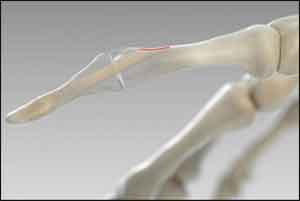- Home
- Editorial
- News
- Practice Guidelines
- Anesthesiology Guidelines
- Cancer Guidelines
- Cardiac Sciences Guidelines
- Critical Care Guidelines
- Dentistry Guidelines
- Dermatology Guidelines
- Diabetes and Endo Guidelines
- Diagnostics Guidelines
- ENT Guidelines
- Featured Practice Guidelines
- Gastroenterology Guidelines
- Geriatrics Guidelines
- Medicine Guidelines
- Nephrology Guidelines
- Neurosciences Guidelines
- Obs and Gynae Guidelines
- Ophthalmology Guidelines
- Orthopaedics Guidelines
- Paediatrics Guidelines
- Psychiatry Guidelines
- Pulmonology Guidelines
- Radiology Guidelines
- Surgery Guidelines
- Urology Guidelines
Titanium fiber plates found safer for bone tissue repair

It has been found by Researchers from Shinshu University that titanium fiber plates do not cause bone embrittlement after close contact with the bone for prolonged periods and may eliminate the need for plate extraction and the associate surgical risks.Their results were published in the January 25th online issue of the journal Advanced Materials.
"Our titanium fiber plates, unlike conventional titanium plates are prepared by compressing titanium fibers at normal room temperature into plates without changing the fiber shape," said Takashi Takizawa, M.D., the paper's first author from the department of orthopaedic surgery at the Shinshu University School of Medicine. "They can compensate for the major drawback of conventional titanium plates, and find application in a range of fixation and bone tissue repair uses at various sites of the body."
Most commonly used to hold bones in place while they heal, titanium plates are erosion resistant and strong enough to hold the mending bones in place. Doctors may elect to implant a titanium plate in a patient with a bad fracture, a severe skull injury, or bone degeneration disease.
They're not perfect, though.
In many cases, titanium plates have to be removed after the healing has finished, as they can cause stress shielding in which the bones become brittle. To correct this problem, Noboru Nakayama, an associate professor of engineering at Japan's Shinshu University developed the titanium fiber plate in 2014. Awarded a patent by both Japan and the United States, this material offers a myriad of potential clinical uses without the drawbacks of conventional titanium plates.
The titanium fiber plates share a particularly important characteristic with natural bone, according to Takizawa. They both have a nearly identical measurement of stiffness, known as Young's modulus. Conventional plates have a Young's modulus four to 10 times higher than that of bone. The difference in stiffness levels can eventually causes eventual bone embrittlement as the bone and plate are in contact.
The team, led by Naoto Saito, the director of the Institute for Biomedical Sciences, and the Interdisciplinary Cluster for Cutting Edge Research at Shinshu University, also tested the use of titanium fiber plates in regenerative medicine. Since the shape of the titanium fibers remains unchanged as the plates are prepared at room temperature, a unique porous environment is created throughout the plate.
"We've seen how regenerated bone penetrates into the titanium fiber," Takizawa said. "Various enterprises are interested in titanium fiber plates, and we are going to apply the plates to clinical bone tissue repair. I believe... that titanium fiber plates can be permanently placed without removal surgery."

Disclaimer: This site is primarily intended for healthcare professionals. Any content/information on this website does not replace the advice of medical and/or health professionals and should not be construed as medical/diagnostic advice/endorsement or prescription. Use of this site is subject to our terms of use, privacy policy, advertisement policy. © 2020 Minerva Medical Treatment Pvt Ltd